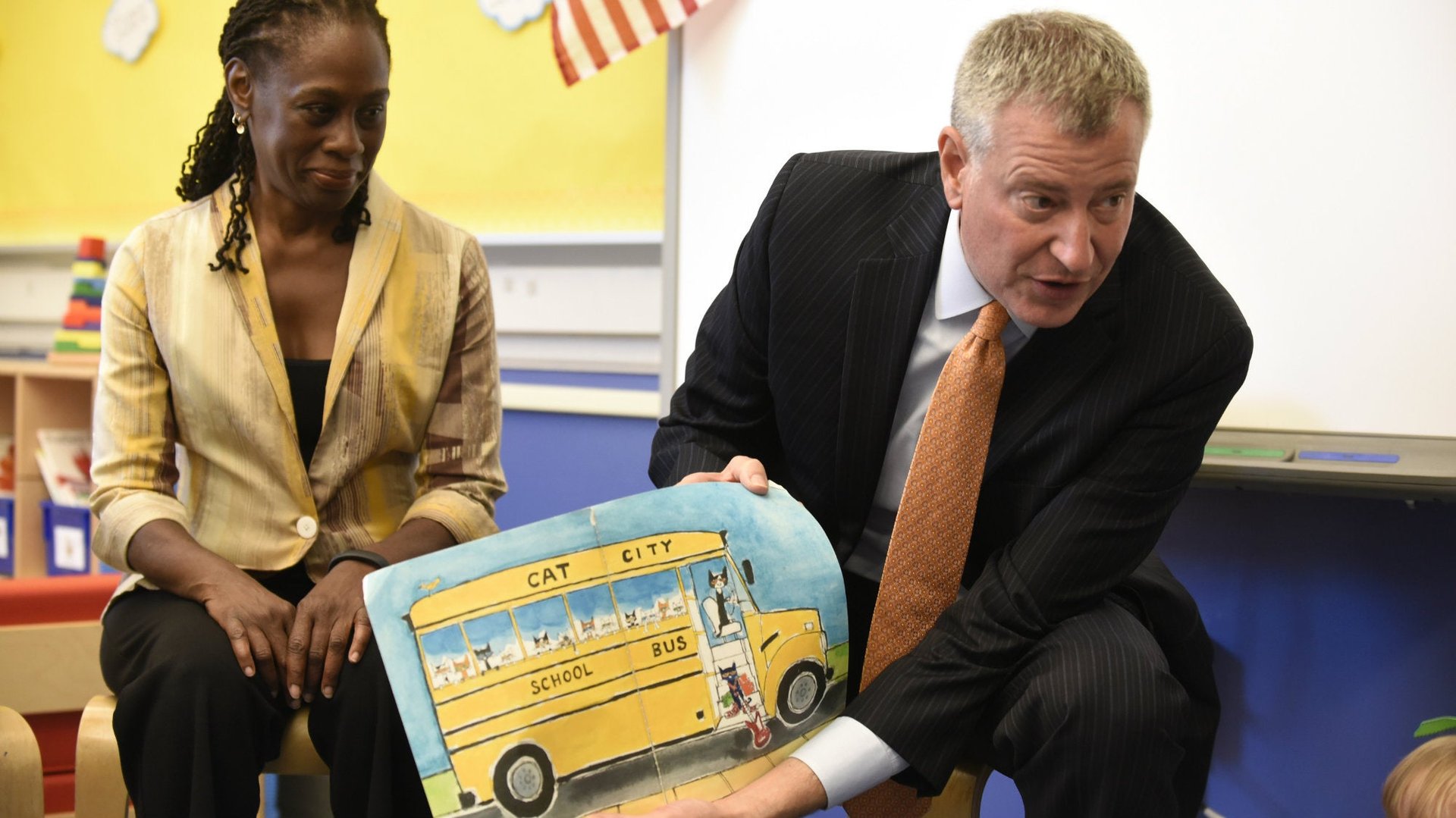Researchers say they’ve found a way to start fixing educational inequality
New York City’s gifted and talented programs place kids in classes with an accelerated curriculum among a more selective peer group. Parents scramble to prepare their 4-year-olds for the test to get into the program, which starts in kindergarten, in hopes of giving them the best chance to thrive as they rise through the grades.


New York City’s gifted and talented programs place kids in classes with an accelerated curriculum among a more selective peer group. Parents scramble to prepare their 4-year-olds for the test to get into the program, which starts in kindergarten, in hopes of giving them the best chance to thrive as they rise through the grades.
Rather, it’s white parents who disproportionately get their kids to take the gifted test. As a result, the program, which launched in 2005, isn’t helping to equalize educational opportunity by selecting students based solely on merit. In 2011, about 70% of New York City public school students were black or Hispanic, while more than 70% of kindergartners in gifted and talented programs were white or Asian.
A pair of researchers from New York University, Ying Lu and Sharon Weinberg, investigated which factors influence kids to take the gifted test. One stood out: kids who attended public pre-kindergarten were almost five times more likely to take the gifted test. Attending pre-K was the most important predictor they measured, even among demographic factors like where the kids lived or which socioeconomic group they came from.
Attending public pre-K also significantly reduced the disparities in test-taking among white and non-white kids. Black kids were 53% less likely to take the test than white kids if they did not attend pre-K. That gap shrunk to 25% for those who attended part-time pre-K and 22% among those who attended full-time pre-K, according to the study.
Ying and Weinberg looked at the records of 70,000 public school kids in 2009, linking them to demographic information and neighborhood characteristics. A bit more than a third of kindergartners had attended part-time public pre-K beforehand, and just under a fifth went to full-time public pre-K.
Recognizing its benefits, universal pre-kindergarten was introduced in 2014 by New York mayor Bill De Blasio. But Weinberg tells Quartz that pre-K programs need to be diligent about providing information about the labyrinthine application process for gifted and talented programs to parents. “Having universal pre-K affords the Department of Education the chance to teach about the G&T,” she says. “They have a captive audience.”
Kids can’t get into gifted programs if they don’t take the test, of course, but even then it is dauntingly competitive. The cut-off for consideration is the 97th percentile, but in reality only kids in the 99th percentile have a shot. (Even then not all make it: 1,600 kids scored in the 99th percentile in 2012, for only 400 available slots.)
Critics argue that the gifted and talented system reinforces inequality by class and race, attracting advantaged wealthier students and leaving behind disadvantaged ones. Rather than equalizing access to a fast-track education, it institutionalizes the system’s already large disparities. James H. Borland, a professor of education at Teachers College, argues that either black and Hispanic kids are less gifted or the system is not working properly to identify the gifted among all of New York City’s kids.
Encouragingly, more recent data have shown that the effect pre-K has on gifted applications has reduced, perhaps due to the fact that the program is now more widely known (and parents who have been through it once now know what to do with siblings). But it continues to have a strong effect, Ying says.